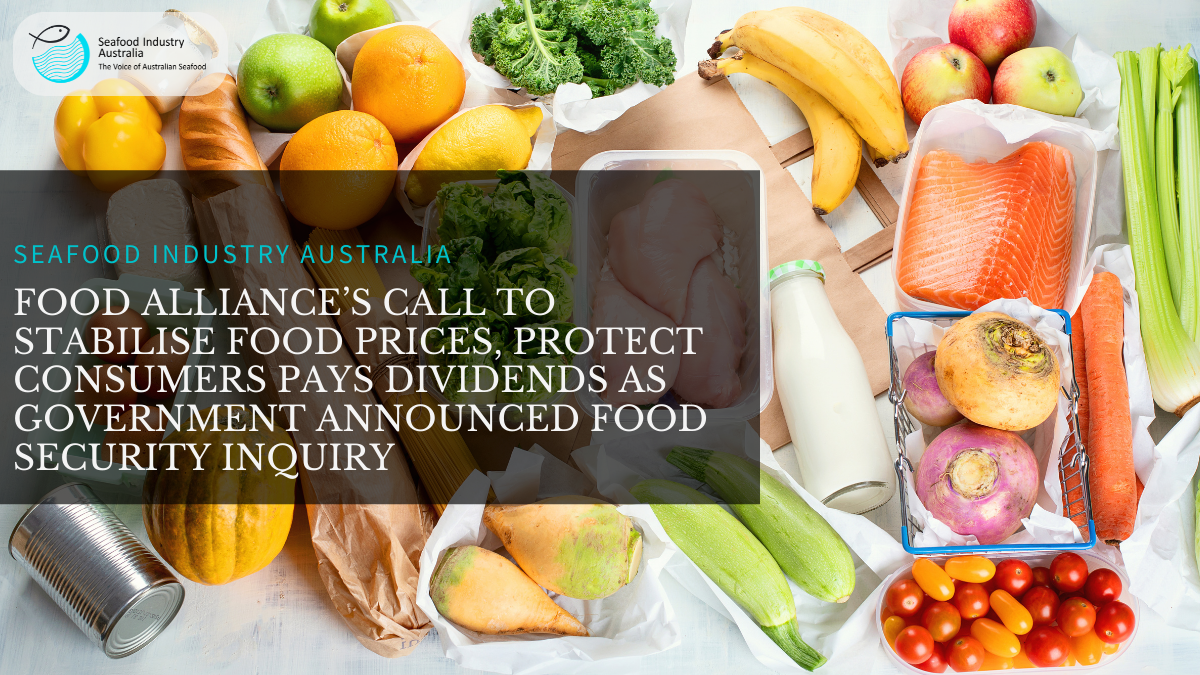
FOOD ALLIANCE’S CALL FOR A NATIONAL FOOD SECURITY STRATEGY TO STABILISE FOOD PRICES AND PROTECT CONSUMERS PAYS DIVIDENDS
Government announces inquiry into Food Security in Australia
The National Food Supply Chain Alliance, made up of nine national food industry associations representing 160,000 businesses, says the Government’s announcement that it will commence an inquiry into food security in Australia is welcome and is something the Alliance has been calling for, for many months, following devastating natural disasters.
The Alliance says a successful outcome at the completion of the inquiry is one where there is bipartisan support to develop a national food supply chain strategy that protects the Australian consumer from ongoing global and domestic disruptions which will ultimately help stabilise food price fluctuations and provide consistent, dependable access to sufficient volumes of food for domestic consumption.
From an industry perspective, improvements in supply chain management will boost business, enhance innovation and technology, create jobs, and increase broader economic development opportunities.
Spokesperson, Richard Forbes said there has never been a more critical time to examine Australia’s food system and then develop a long-term national food plan with future resilience in mind, “The threat to Australia’s national food supply chain, sparked by the pandemic, current geo-political tensions, the threat of a global recession plus the ongoing threat of natural disasters due to climate change, have highlighted the nations vulnerability to both domestic and global factors.
“These events have destabilised our supply chains and triggered flow-on impacts for both the economy and our communities. A reduction in food availability and increased food prices is an example of this. The culmination of these events has placed unprecedented stresses on food supply chains, with bottlenecks in labour, supply of product, processing, transport, and logistics. Recently the Alliance calculated worker shortages of 172,000 from paddock to plate.
“If we look at natural disasters alone, The Intergovernmental Panel on Climate Change (IPCC) has warned that extreme weather events – like floods, heatwaves, fires and droughts – will become more frequent and more severe in Australia due to climate change. And this is likely to lead to more frequent disruptions to food supplies and rising food prices. We are living in a country of rolling natural disasters”.
The Alliance says studies have shown time and time again that achieving supply chain resilience must be a ‘multi-level’ effort meaning it should bring different groups of stakeholders together to work collectively to mitigate and soften the harm caused by supply chain disruptions. Designing a resilient supply chain is a balancing act between our traditional objectives for managing supply chains, and the criteria we will apply to supply chains of the future.
In recent years, several reports and research papers have been written about this issue, but none have been implemented. If there was ever a time to develop and implement a national food supply
chain strategy, it is now.
What is the National Food Supply Chain Alliance
The National Food Supply Chain Alliance (NFSCA) represents all facets of Australia’s food supply chain from farmers, processors, grocers and butchers, independent supermarkets, convenience stores, wholesale suppliers and distributors to food retailers including cafes, restaurants, hotels, and clubs. In total, the nine national food industry associations represent over 160,000 businesses with a combined revenue of a staggering $224 billion and who employ almost 1 million workers.
The Associations include: The National Farmers Federation (NFF), Australian Meat Industry Council, (AMIC), Independent Food Distributors Australia (IFDA), Master Grocers Australia (MGA), the Australian Association of Convenience Stores (AACS), AUSVEG, Seafood Industry Australia (SIA), the Restaurant and Catering Industry Association and the Refrigerated Warehouse and Transport Association of Australia.
Contact: Richard Forbes CEO – Independent Food Distributors Australia – 0427 270687
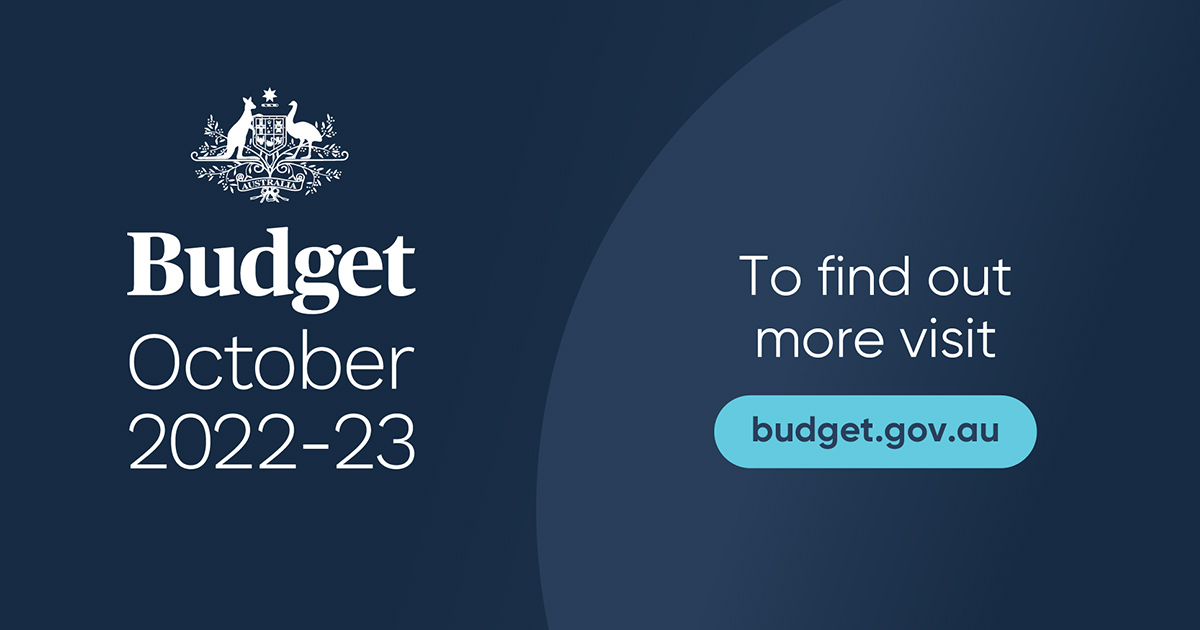
SIA’s guide to the Albanese government Federal Budget 2022-23 at-a-glance
There were a number of announcements in last night’s 2022-23 Albanese government Federal Budget which will provide ongoing and meaningful support to the Australian seafood industry including a commitment to implementing mandatory Country of Origin Labelling for seafood sold in foodservice, and funding for the national rollout of the Stay Afloat program.
We have welcomed these commitments, a copy of our media statement can be found here.
Our budget overview of the information you need to know is available below:
- Country of Origin Labelling
- $1.6 million has been committed to work with the seafood and hospitality sectors to develop mandatory Country of Origin Labelling for seafood in hospitality that will help consumers know if the seafood they order is Australian, while minimising costs and compliance burden on businesses.
- Read SIA’s press release here.
- Stay Afloat national roll out
- The Government will provide $1.5 million over 2 years from 2022–23 to support the national rollout of Seafood Industry Australia’s Stay Afloat Program, which will establish up to 50 hubs in Australian fishing communities to provide mental health and wellbeing support for commercial fishers and seafood workers.
- Read SIA’s press release here.
- South East Trawl Fishery structural readjustment
- $3m has been allocated or AFMA fee waivers
- $200,000 to extend and broaden the Tuna Champions program
- $5.9m for Fisheries Habitat Restoration
- Powering Australia – Development of Australia’s Seaweed Farming
- FRDC has been allocated $8.1m over three years through DAFF for seaweed farming. The project supports the commercialisation of seaweed as a low emissions feed and support projects that lower barriers to market entry. The funding will support the establishment of the National Hatchery Network, policy reform, and priority research and development activities. This measure delivers on the Government’s election commitment as published in the Plan for a Better Future.
- Marine Parks
- The Government will provide $10.8 million over 4 years from 2022–23 to improve marine park management in Australia, support the health and biodiversity of Australia’s oceans and strengthen Australia’s international engagement and leadership. The cost of this measure will be partially met from within the existing resourcing of the Natural Heritage Trust special account. This measure delivers on the Government’s election commitment as published in the Plan for a Better Future.
- Australian Manufacturing
- The Government will provide $135.5 million over 4 years from 2022–23 to continue to support Australian industry to develop domestic manufacturing capabilities and upskill the manufacturing sector workforce.
- Drought readiness
- The Government will provide $20.8 million over two years from 2022–23 to support Australia’s readiness to respond to drought events. This includes, $14.3 million over two years from 2022–23 to drive adoption of established drought resilience research. $6.6 million over two years from 2022–23 to maintain existing capability for future drought preparedness and support delivery of the National Drought Agreement and National Drought Plan.
- Aviation
- $60.0 million over two years from 2023–24 to upgrade Hobart Airport runway and airfield facilities.
- $55.0 million over two years from 2022–23 to upgrade border services facilities at the Newcastle Airport international terminal.
- $17.9 million over two years from 2022–23 to undertake planning and design work for border services facilities at Western Sydney International Airport.
- Biosecurity
- The Budget includes a substantial down-payment on the Government’s commitment to long-term, sustainable funding for biosecurity through new investments worth $134.1 million, including fast-tracking $61.6 million in funding over the next two years. $11.7 million over 4 years from 2022-23 (and $3.3 million per year ongoing from 2026-27) to expand our detector dog capability at the border, by investing in an additional 20 detector dogs and handlers.
- $46.7 million increased funding for traceability initiatives
- $4 million to establish a new Inspector-General for animal welfare.
- $302 million to invest in sustainable agriculture through the Natural Heritage Trust.
- Budget revisions and savings
- As a result of its Spending Audit, the Government will improve quality of spending by redirecting funding from 2019–20 Budget and 2022–23 March Budget measures. This totals $47.1 million over 4 years from 2022–23 in relation to agriculture, fisheries and forestry.
- Savings include:
- $30.0 million over 4 years from 2022–23 for the partial reversal of the 2022–23 March Budget measure titled Regional Accelerator Program – establishment, including redirecting uncommitted funding for the National Centre for Digital Agriculture Innovation and Adoption Hubs.
- $14.0 million over two years from 2022–23 for the partial reversal of the 2022–23 March Budget measure titled Agriculture – continuing to deliver Agriculture 2030, including not proceeding with Round 2 of the Agricultural Shows Development Grant program.
- $2.8 million in 2022–23 for the partial reversal of the Agriculture Shows and Field Days program, including redirecting uncommitted funding from Round 2 of the program.
- $0.3 million in 2022–23 for the partial reversal of the 2019–20 Budget measure titled National Agricultural Workforce Strategy program.
A copy of the Treasurer’s speech is available here. A copy of the Department of Agriculture, Forestry and Fisheries budget overview infographic is available here, and sector overviews factsheets are available here. A copy of the FRDC budget recap is available here. A copy of the iSentia budget overview is available here.
A copy of press releases from Minister for Agriculture Murray Watt can be found here, Minister for Industry Ed Husic can be found here, and Minister for the Environment Tania Plibersek can be found here.
For more information on the 2022-23 Federal Budget, or specific points please www.budget.gov.au.
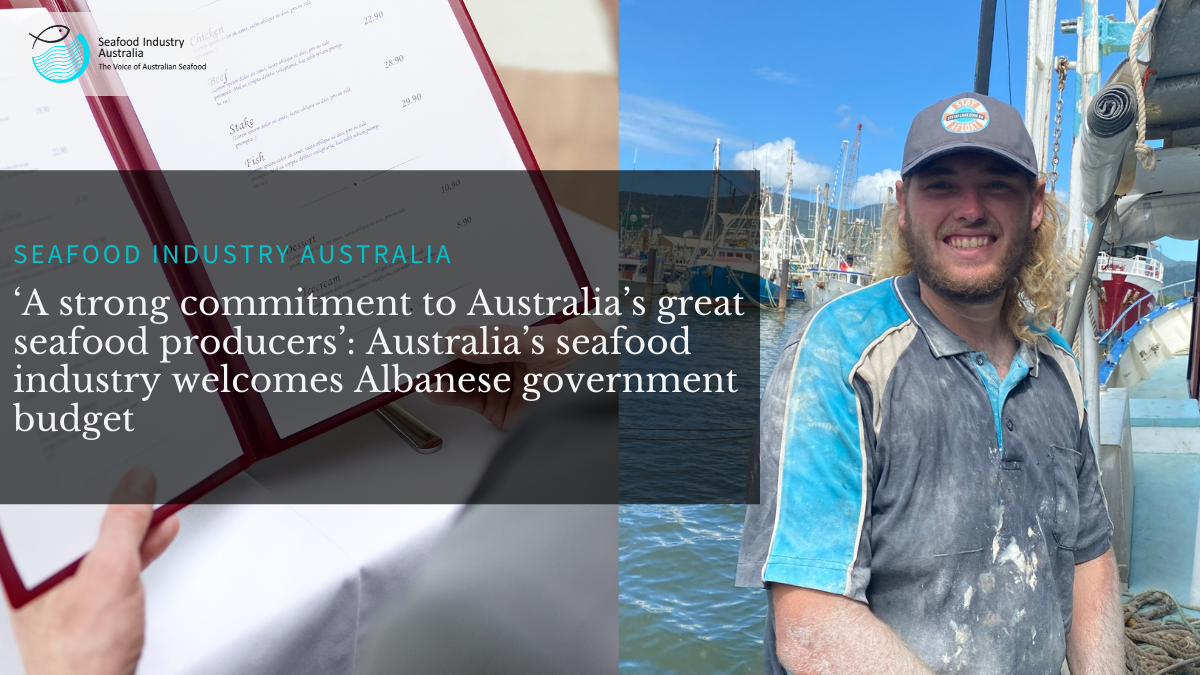
‘A strong commitment to Australia’s great seafood producers’: Australia’s seafood industry welcomes Albanese government budget
Seafood Industry Australia (SIA), the national peak-body representing Australia’s commercial seafood industry, has welcomed the October 2022 Albanese government budget, supporting its commitments to the introduction of Country of Origin Labelling for Australian seafood sold in foodservice (p.155), and announcement of funding for the national rollout of their industry-specific mental health program, Stay Afloat (p.139).
“On behalf of Australia’s commercial seafood industry I would like to extend my congratulations and thanks to Prime Minister Anthony Albanese, Treasurer Jim Chalmers, Minister for Agriculture Murray Watt, Minister of Industry Ed Husic, Assistant Minister Manufacturing Tim Ayres and Australian Labor Party (ALP) for their strong commitment to Australia’s great seafood producers,” SIA CEO Veronica Papacosta said.
“In the lead-up to the May 2022 Federal Election, SIA secured a landmark commitment from the ALP to work with the seafood and hospitality sectors to implement mandatory Country of Origin Labelling (CoOL). We are thrilled to see the ALP allocate $1.6 million in this budget to deliver on this commitment. The implementation of mandatory CoOL for seafood in foodservice has been one of SIA’s key priorities for the past five years, and a cause championed by industry and consumers for decades.
“Since 2018, when consumers buy fresh seafood anywhere around Australia, by law, it has to be labelled with its country of origin, however there has been no requirement for this in the foodservice sector. Australians love their seafood and next to freshness, country of origin is one of the most influential factors for a consumer choosing which seafood they buy. The introduction of CoOL in foodservice will help consumers make informed decisions about the food they buy in restaurants, cafes and take-away food stores around the country, and allow consumers to support our great, Australian seafood producers.
“Right now, for food safety purposes, the supply chain of seafood is known in foodservice all the way to the kitchen door, however, the information is often not passed on. What we’d like to see is Australian seafood identified on menus, simple as that. At a minimum we’d like to see something like Australian Barramundi listed, and businesses can then be as specific as they’d like. For imported seafood a simple ‘i’ to denote it’s imported with a clear explanation of what it means printed somewhere on the menu, similar to identifying if something is gluten free or vegan.
“Importantly, we recognise the important role imported seafood plays in the market and in consumer diets, but overwhelmingly we’ve heard consumers struggle to support industry when they dine out, because they simply can’t tell which seafood is Australian. Australia imports 66% of seafood consumed, so having this sort of information clearly available to consumers in foodservice is critical to allow them to supply chain transparency, and choice.
“We thank the ALP for their commitment to fund a two-year national roll-out of the Stay Afloat mental health program to 50 seafood hubs around the country. This is a wonderful result, and we look forward to being able to provide critical and much needed support to our industry members.
“Research has shown Australia’s commercial fishers experience twice the base-rate of psychological stress than the general population, and this is not okay. We’ve run a successful pilot of the Stay Afloat program, and provided life-altering support.
“This pilot program has been specially developed to help break the stigma associated with poor mental health within industry, connect industry members with existing services and supports, and provide education to primary health networks regarding the seafood industry’s operations and unique stressors including reforms and the implications of natural disasters.
“We thank the Albanese Government for their support, and we look forward to seeing both these initiatives brought to life.”
<ENDS>
For more information or to organise an interview with SIA CEO Veronica Papacosta
please contact SIA communications and public affairs manager Jessica McInerney
E: [email protected] M: 0420 695 431
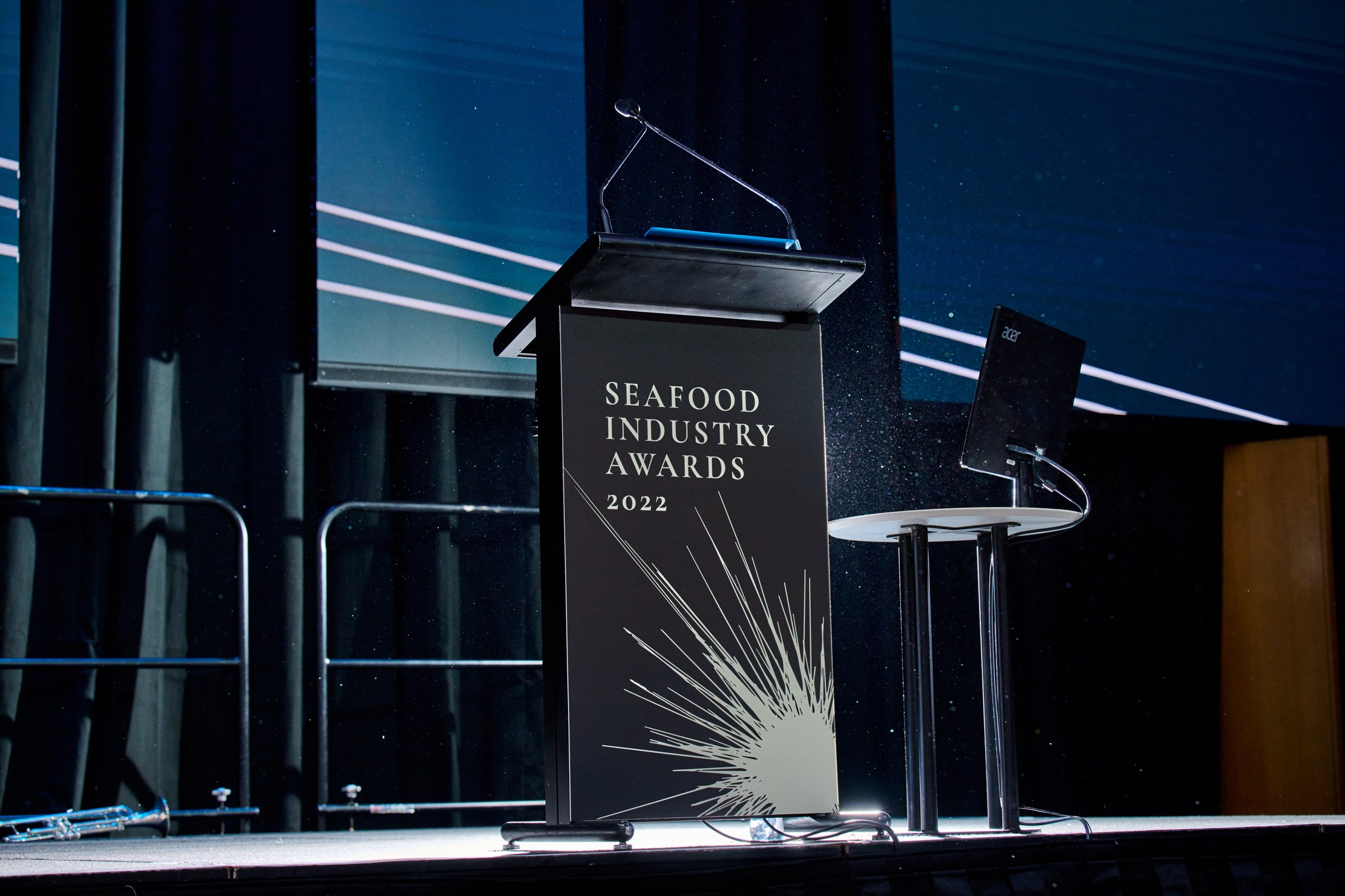
The National Seafood Industry Awards 2022 Winners Announced
| The winners of the 2022 National Seafood Industry Awards and Hall of Fame inductees have been announced as part of the National Seafood Industry Awards gala dinner, held as the final event of the Seafood Directions Conference at the Sofitel Brisbane Central on Thursday, September 15, 2022. “We are proud to announce the winners of the 2022 National Seafood Industry Awards and the Hall of Fame inductees,” Seafood Industry Australia CEO Veronica Papacosta said. “The Awards showcase the best of the best in the Australian seafood industry. Recognising our fishers, aquaculturists, retailers, suppliers, restaurateurs, individuals, and businesses. “The National Seafood Industry Awards recognise all aspects of the Australian seafood industry, from water to plate. We’re proud of the individuals and organisations that work hard to underpin Australia’s global reputation as a producer of premium, sustainable seafood. “The Awards recognise 12 categories honouring the Australian seafood industry’s top achievers for their professionalism, exceptional quality product, contribution to the economy, and commitment to supplying the best seafood to local, national, and international markets. “We are honoured to induct 13 industry greats into the Hall of Fame. These individuals have made a substantial positive difference to the seafood industry over many years, shown outstanding personal and professional leadership qualities, and are highly respected throughout the seafood industry. Tonight we acknowledge, celebrate and thank them for their contribution to the industry and tireless work to support Australia’s great seafood.” National Seafood Industry Awards – 2022 winners Primary Producer – sponsored by Fish in the Family Wallis Lake Fishermen’s Co-operative, NSW Business (Large) – sponsored by NatPos Debbie’s Seafoods, QLD Business (Small) – sponsored by NatPos Malanda Seafood, QLD Safety – sponsored by Austral Fisheries Huon Aquaculture, TAS Research, Development and Extension – sponsored by Fisheries Research Development Corporation Australian Council of Prawn Fisheries, Australian Prawn Farmers’ Association, Curtin University and Source Certain, QLD Environment – sponsored by OceanWatchNSW Department of Primary Industries, NSW People and Development – sponsored by Skills Impact Women in Seafood Australasia, WA Promotion – sponsored by Queensland Seafood Marketers Association Shark Bay Prawn Trawler Operators Associationon behalf of the Australian Council of Prawn Fisheries (ACPF), WA Restaurant – sponsored by Great Australian Seafood Pearl and Co., TAS Fish and Chip Awards – sponsored by Great Australian Seafood Tasmanian Gourmet Seafoods, TAS Young Achiever – sponsored by Affectus Siobhan Threlfall, NSW Industry Ambassador – sponsored by Australian Fisheries Management Authority George Kailis, WA Hall of Fame inductees
|
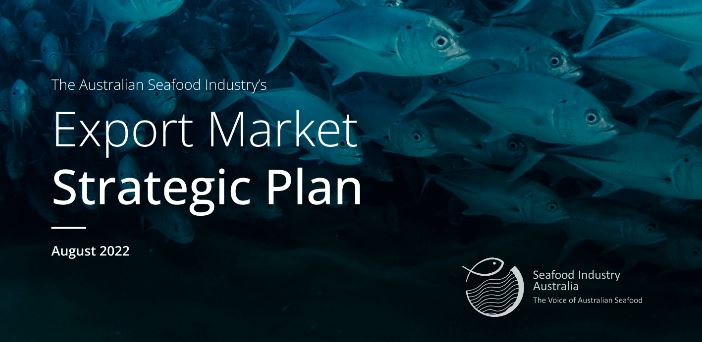
‘Industry unites to rebuild export sector’: Australian seafood industry launches first whole-of-industry Export Market Strategic Plan
Seafood Industry Australia (SIA), the national peak-body representing the Australian seafood industry, has released the Australian Seafood Industry’s first whole-of-industry Export Market Strategic Plan as part of industry’s biennial conference, Seafood Directions, which runs in Brisbane from September 13-15.
“This is the first export-focused strategic plan developed by the entire Australian seafood industry including our producers, businesses and exporters. This plan has a focus on unity and growth, and reflects the important role our export sector plays in the Australian seafood industry, the $1.4 billion contribution we make to the national economy, and future-proofing the supply of sustainable and nutritious Australian seafood to the world’s growing population,” SIA CEO Veronica Papacosta said.
“The Australian seafood industry was the first and worst hit when the COVID-19 pandemic struck. Our seafood exports stopped virtually overnight, and the impacts were confounded by growing international trade tensions. We needed to pivot, and we needed to pivot fast. Crisis brought opportunity, and the Australian seafood industry united our actions in the international trade landscape to develop this plan which we are proud to launch as part of the national Seafood Directions conference.
“In supporting the development of this plan we consulted widely, utilising a series of interviews and a review of existing data and reports. Through this process we captured five key, strategic priorities which were common amongst all stakeholders, and their actions which will be essential to achieving the plan’s key targets.
“The overarching goal of the plan is to grow Australian seafood exports to $2b by 2030. To achieve this, we will: increase the volume we export, get more for our products through premium pricing, strengthen our existing markets and expand into new markets, increase the capabilities and number of exporting businesses, and communicate and grow the presence of ‘Brand Australia’ and ‘Great Australian Seafood’ internationally.
“We have focused our strategic activities around three country tiers. Our tier one countries are countries where trade is currently open, the competitors are low and there is high-growth potential. Think countries like Japan, Vietnam and South Korea.
“Tier two countries are ones where trade is open, but the market is more competitive or could be impacted by other barriers. These markets may have been strong in the past and the ability to be again in the future, or with strategic positioning could be strong trading partners. Places like China, the UK and the USA. Tier three includes countries like India, where we have an interim free trade agreement in place, a growing middle and upper class, and could be a strong trading partner for Australian seafood in the future.
“We’d also like to acknowledge the hard work of the Seafood Trade Advisory Group (STAG), SafeFish, the Seafood Export Consultative Committee (SECC), the Fisheries Research and Development Corporation (FRDC) and Austrade. Australia’s clean, safe, sustainable and pristine seafood has one of the most outstanding reputations in the world, a reputation we would not have without the tireless work of those in this space for decades gone.”
<ENDS>
The Export Market Strategic Plan is supported by the Australian Government through the Department of Agriculture, Water and Environment’s Agricultural Trade and the Market Access Cooperation (ATMAC) Program.
For more information or to organise an interview with SIA CEO Veronica Papacosta please contact
SIA Communications and Public Affairs Manager Jessica McInerney
E: [email protected] M: 0420 695 431
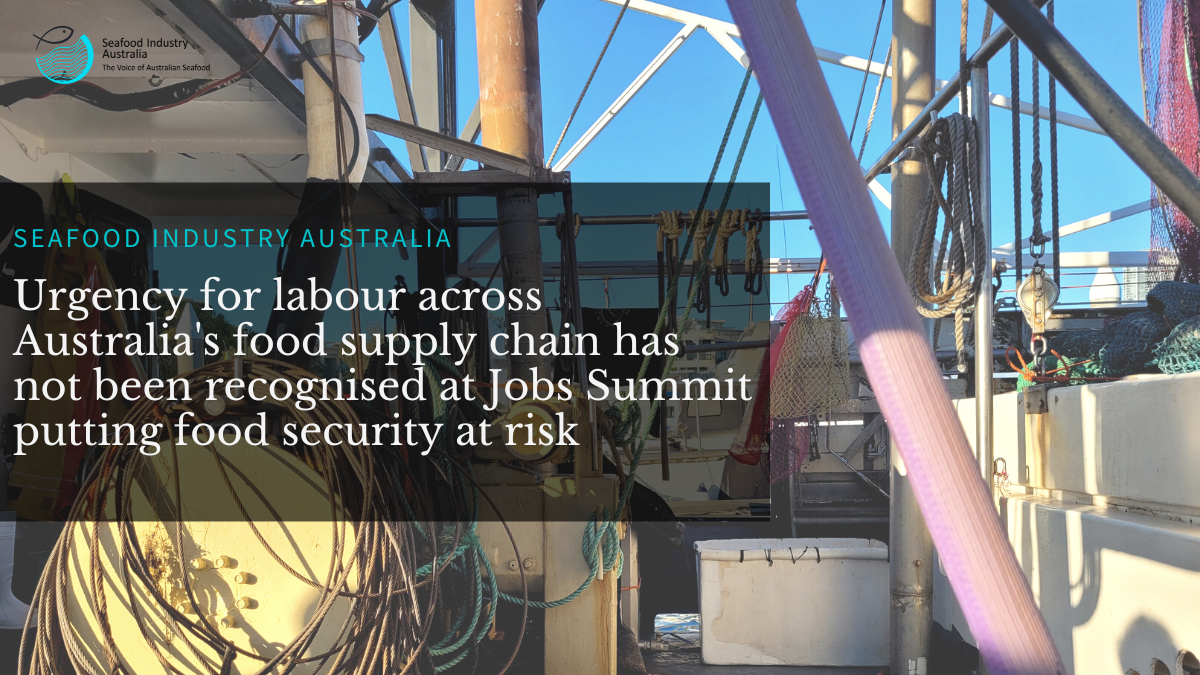
URGENCY FOR LABOUR ACROSS AUSTRALIA’S FOOD SUPPLY CHAIN HAS NOT BEEN RECOGNISED AT JOBS SUMMIT PUTTING FOOD SECURITY AT RISK
The lack of immediate solutions will lead to higher food prices for consumers and reduced food availability
In the lead up to the Jobs and Skills Summit, Australia’s top peak food industry bodies calculated the food supply chain needed 172,000 skilled and unskilled workers from paddock to plate to continue the effective provision of food to the Australian community.
The Food Supply Chain Alliance says despite food prices and food availability being top of mind for Australian consumers over the past twelve months, as part of ‘cost of living ‘pressures being experienced nation-wide, it does not believe the issues facing the food sector were given due priority or acknowledgement by the Government during the Summit. The likely result will be the negative impact it will have on Australia’s domestic food security.
Pickers are needed to harvest horticultural crops, packers in warehouses and truck drivers for food distribution, workers in processing plants, fishers to crew our boats, staff to work in independent supermarkets and convenience stores and critically, over 100,000 staff to support the hospitality industry.
The Alliance said at the outset that this area was one of the few ‘cost of living’ pressures the Government can influence. The Alliance believes the food sector, given it provides an essential service to the community, should have been given priority at the Summit with tangible solutions found to be considered a success.
Whilst there are positive announcements overall they have missed the mark and failed to provide immediate relief to the sector such as:
• Increasing the permanent migration cap from 160,000 to 195,000 is a positive step but this 35,000 increased does not address the immediate short fall of 172,000 workers needed in the food supply chain.
• With over 900,000 unprocessed visas to be processed by government, hiring a 500-person surge workforce will still take over 9 months to reduce the backlog, this is simply too long. Food supply chain businesses need help now to harvest, pack, ship and distribute food to Australian consumers.
• The need for a national food supply chain strategy coupled with a regional housing strategy has not been addressed by the summit. Given the severity of the challenges facing the sector, the lack of announcements shows the summit has not taken the needs of the engine room of the economy seriously.
• Getting pensioners and other welfare recipients into the workplace is important as is simplifying the current temporary visa holder obligations and reducing employment deterrents such as payroll tax.
The ‘Food Supply Chain Alliance’ represents over 160,000 businesses with a revenue of over $200 billion. It includes the National Farmers Federation, the Australian Meat Industry Council, Seafood Industry Australia, Independent Food Distributors Australia, AUSVEG, Master Grocers Australia, Restaurant and Catering Industry Association and the Australian Association of Convenience Stores.
Contact: Richard Forbes, CEO Independent Food Distributors Australia – 0427 270 687
<ENDS>
For more information or to organise an interview with the Food Supply Chain Alliance please contact Richard Forbes, CEO Independent Food Distributors Australia on 0427 270 687.
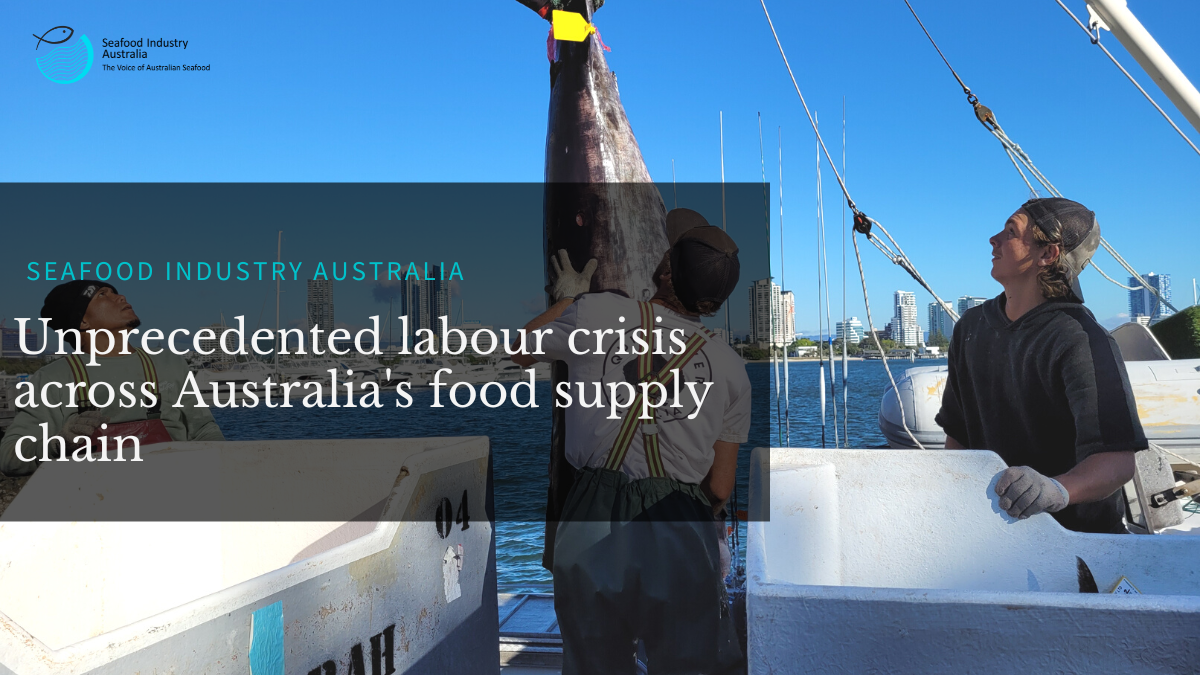
UNPRECEDENTED LABOUR CRISIS ACROSS AUSTRALIA’S FOOD SUPPLY CHAIN
172,000 WORKERS NEEDED SAY PEAK FOOD INDUSTRY BODIES OR PROLONGED HIGHER FOOD PRICES FOR CONSUMERS AND REDUCED FOOD AVAILABILITY WILL CONTINUE THROUGHOUT 2022 AND BEYOND
Call for federal government to prioritise food sector in upcoming Jobs and Skills Summit
Australia’s top peak food industry bodies have calculated the food supply chain is short at least 172,000 workers from paddock to plate. This massive labour shortage will have significant long-term impacts on price and the availability of food for the consumer unless solutions are found quickly.
According to the peak bodies, which have recently collaborated to form the Food Supply Chain Alliance, this is one of the few ‘cost of living’ pressures the Government can influence. The Alliance believes the food sector, given it provides an essential service to the community, must be a priority at the upcoming Jobs and Skills Summit, which must deliver viable solutions to be considered a success.
The ‘Food Supply Chain Alliance’ represents over 160,000 businesses with a revenue of over $200 billion. It includes the National Farmers Federation, the Australian Meat Industry Council, Seafood Industry Australia, Independent Food Distributors Australia, AUSVEG, Master Grocers Australia, Restaurant and Catering Industry Association and the Australian Association of Convenience Stores.
The Alliance says there are steps the government can take now to relieve the pressure on food industries and consumers. The food supply chain urgently requires a suite of tools, including suitable visa pathways to welcome overseas workers, as well as measures to facilitate people in the country to take up the work (i.e. lifting restrictions on work rights for temporary migrants and seniors, and support to enable relocation to do the work).
The Alliance believes the government must, as a matter of urgency, develop a National Food Supply Chain Strategy to reduce the impact of both natural disasters and future global challenges.
CEO quotes on the impact of labour shortages on their respective industries:
CEO of the National Farmers Federation, Tony Mahar – “The farm sector’s labour crisis is not only
hurting farmers it’s hurting the economy and it’s hitting consumers in the hip pocket. Farmers are
making the difficult choice not to plant some crops, because they can’t guarantee they’ll have
workers for harvest. If crops don’t get planted, less food gets grown, and people pay more. It’s a
simple equation. We need appropriate visa solutions to attract workers and ensure they’re treated
fairly.”
CEO of AUSVEG, Michael Coote – “Australia’s $15 billion horticulture industry is currently
experiencing a labour shortage of approximately 10,000 individual workers, which equates to many
more roles as workers follow the harvest trail for seasonal work. The demand for workers increases
significantly from winter to summer as production ramps up leading into the summer harvest period.
Without immediate action, the compounding effect of this labour shortage, coupled with adverse
weather conditions and rising farm input costs, will likely result in periods with higher prices for
consumers and a higher likelihood of gaps in availability of some crops over the next 12 months.”
CEO of Seafood Industry Australia, Veronica Papacosta – “The Australian seafood industry
continues to face labour shortages across the wild-catch, aquaculture, and processing sectors. The
current labour shortage is impacting 48% of our businesses; meaning boats are tied up at docks
because we cannot achieve minimum crewing levels, seafood processors and retailers cannot find
staff to operate their businesses, and the impacts in our aquaculture facilities will be felt for years to
come. Like all proteins and produce, a reduced supply of seafood into stores puts pressure on the
cost of the family meal. This is something we never want to see.”
CEO of the Australian Meat Industry Council, Patrick Hutchinson – “The post-farmgate meat supply
chain is already under-resourced to process the number of livestock forecast to be produced in
Australia in 2022. Forecasts for 2023-2025 can be anything between a 15-35% increase in
livestock numbers. This will obviously be catastrophic for Australian farmers if the volume of
livestock is far greater than the meat processing industry can process, and the wider supply chain
has the ability to manage.”
CEO of Independent Food Distributors Australia, Richard Forbes – “The ability to transport food is
becoming harder by the day due the significant shortages of truck drivers across the country.
Coupled with that is an ongoing lack of skilled and unskilled workers in food warehouses to help
pack and store food products and drive forklifts to unload trucks from suppliers and load them for
food retail outlets. Recruiting and maintaining staff is almost impossible.”
CEO of Master Grocers Australia, Jos De Bruin – “Independent Food and Grocery supermarkets have
never before experienced worker shortages as we have seen in the past 12 months. The situation is
diabolical as members struggle with increased costs of doing business coupled with insufficient staff
to help run their stores. Our industry sector has traditionally relied upon local workers in the first
instance and then new migrant workers, temporary visa holders and backpackers to work in their
stores. MGA strongly encourages the Government to allow older workers currently not wishing to
risk their pension payments, to work in our members stores as well as simplifying Temporary Visa
conditions to allow temporary visa holders to work longer hours, extend their visa and apply for
permanent residency.”
CEO of the Restaurant and Catering Industry Association, Belinda Clark – “The Hospitality industry
is a $57 billion market. Restaurants, cafés and Caterers are currently looking at a shortfall of 100,000
jobs across the country. The heartbreak of having to shut their doors due to COVID-19, losing their
staff or even having to close the business for good has taken its toll on everyone. And we’re still not
out of the woods. Input costs have risen considerably in all areas, this perfect storm will mean that
prices will have to rise just for businesses to make ends meet and customers will start to see their
favourite items on the menu start to disappear. Times have never been tougher and the public and
industry need to come together to get through this. We desperately need a solution.”
CEO of the Australian Association of Convenience Stores, Theo Foukarre – “The Petrol &
convenience channel has never experienced such dire workforce shortages, currently seeking over
15,000 staff nationally. The industry relies heavily on overseas migration from international students
and working holiday travellers however they just have not come back in the numbers that the
government expected them to. Our member businesses are stretched to the absolute maximum
trying to just operate their retail stores with limited labour whilst also having to increase staff wages
simply to retain their staff – the impact on the bottom line is endless. These pressures combined
with the exploding cost of doing business is already seeing a rise in shelf prices of food and grocery,
in some categories up to 15% higher.”
<ENDS>
FIA Contact: Richard Forbes, CEO Independent Food Distributors Australia – 0427 270 687
For more information or to organise an interview with SIA CEO Veronica Papacosta please contact SIA communications and public affairs manager Jessica McInerney on [email protected] or 0420 695 431.
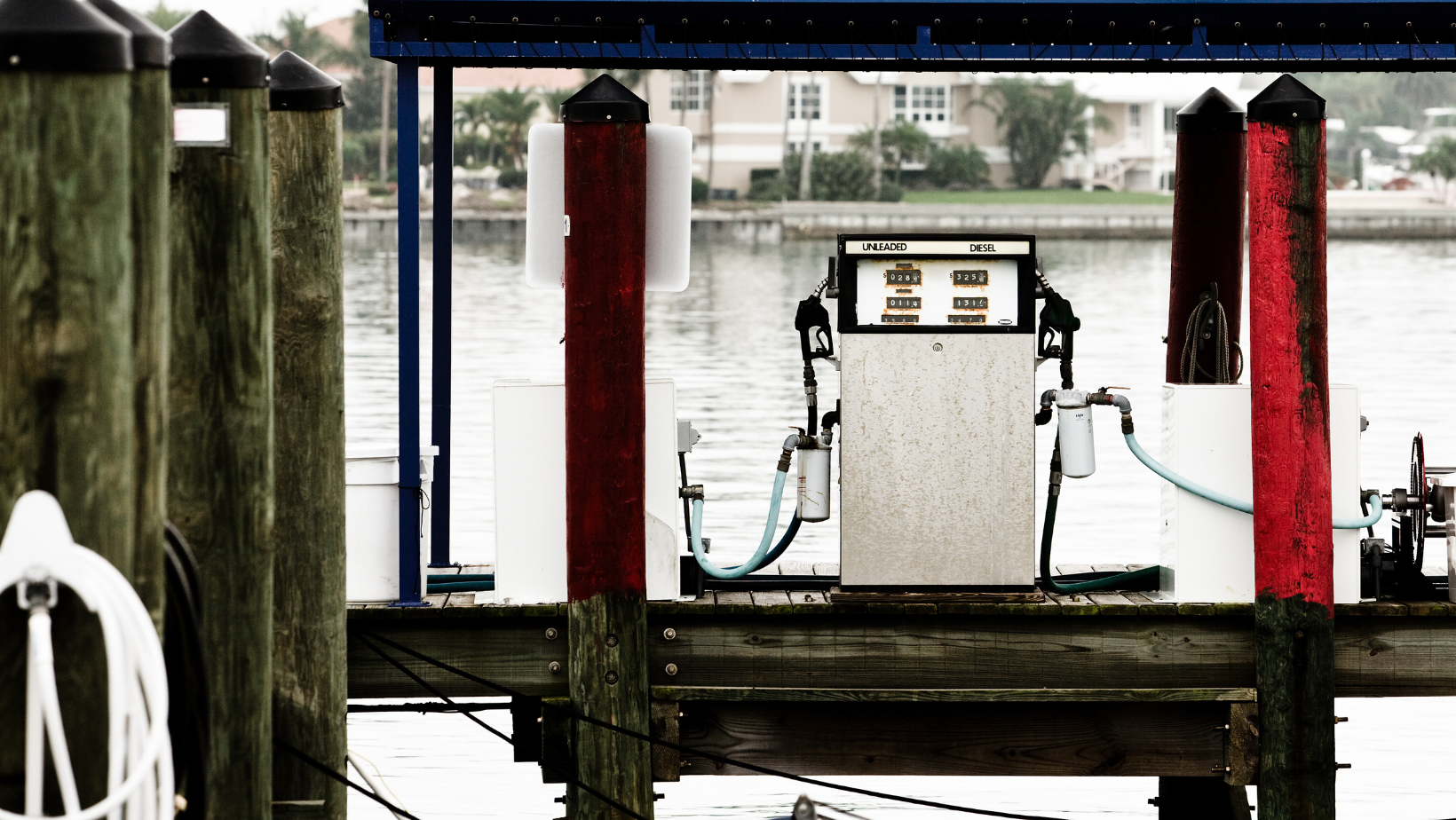
Fishing for alternative fuels: Seafood Industry Australia launches research project
By Catherine Norwood for FRDC.
As escalating diesel prices see a growing number of boats tied up at ports all around the world, Seafood Industry Australia’s (SIA’s) current research into alternative fuels is tackling this increasingly urgent issue for our wild-catch seafood and aquaculture vessel fleets.
The ‘Climate Resilient Wild Catch Fisheries’ project is funded by FRDC, with Austral Fisheries, Blue-X and Sunshot Industries as research partners, and Tom Cosentino as Project Manager.
The initial impetus for the project was addressing growing consumer expectations about industry action to mitigate climate change. But with diesel prices reaching $2.50 a litre in July 2022 there is now an added economic impetus, as fishing becomes too costly for some operators.
Call to action
SIA CEO Veronica Papacosta says the rising cost of fuels and determining which alternative fuels and propulsion options will be the best suited for Australia’s wild catch fisheries and the aquaculture sector in the future are two of the key challenges facing the industry as they look to reduce carbon emissions and become climate resilient.
“There is a strong need to activate and engage the seafood industry in the conversation on viable alternative fuel options to ensure we are climate resilient.
“We need to demonstrate what options are likely to exist around the country in the short, medium and long-term, and demonstrate how these options are viable and meaningful to industry. We need to develop a clear plan that allows our industry to take advantage of these options and be ready to adapt to future fuel challenges. This needs to be supported from within the sector, and from outside R&D investment.
“There is a surplus of tools, resources and research around climate change and resilience, but to this point, little of that work has been translated into forms that the industry finds usable and valuable.
“Leaders and innovators in the industry are attempting to make meaningful change in this area, however they are acting in isolation with limited coordination to support the journey towards new ways of operation in the future.
“In addition to the current fuel cost-price squeeze it is also essential to demonstrate practical progress towards climate resilience.”
Veronica also makes the point that there is likely to be increasing competition in the protein market as consumers seek out products that not only promote sustainable practices, but factor in their carbon footprint.
“Access to markets will become more competitive and industry’s performance on responsible productions, carbon reduction and management, will be central themes. This applies to export markets and will become increasingly relevant in domestic markets in the future.”
She notes a number of countries are also planning to implement food carbon taxes, which could lead to additional import taxes on Australian products, if carbon emissions have not been addressed at their point of origin.
The ‘Climate Resilient Wild Catch Fisheries’ project’s technical research coordinator is Allen Haroutonian, Founder of the Blue-X innovation consultancy. He says investigations are looking at three key issues: propulsion systems, fuels storage onboard, and alternative fuels.
He says the greatest challenges relate to wild catch fishers who spend extended time at sea.
Allen says there is a relatively straightforward process for the electrification of boats for inshore fishers and aquaculturalists who primarily focus on day trips and can recharge batteries overnight. For which electric outboard motors and battery options are already available. Electric inboard and outboard motors are relatively cost comparable to the existing Internal Combustion Engines on the market; however the upfront cost of the batteries would need to be amortised when attempting to calculate Total Cost of Ownership (TCO).
But for overnight and more extended fishing trips, the options become much more complex. Storage space on vessels is one of the most challenging issues. Some alternative fuels such as hydrogen, ammonia and methanol need greater volumes to deliver the equivalent energy that diesel provides, and there is only so much room for batteries.
International expo
As part of the SIA project, fleet operator Austral Fisheries is offering its Northern Territory demersal trap fishery fleet as a case study to help evaluate new fuel and vessel technology options.
Blue-X Founder Allen Haroutonian and Austral General Manager Clayton Nelson visited the Electric and Hybrid Marine World Expo in Amsterdam, Netherlands, in June 2022 to see how other countries are approaching this global challenge.
Allen says they were hoping to find a ‘silver bullet or two’ – a new fuel or engine technology that could be easily adapted. But despite there being more than 400 exhibitors, there were no obvious answers.
“It has made us more aware of the challenges and the available options, and potentially the need to combine different options to achieve better environmental outcomes, whilst balancing the CAPEX and OPEX challenges which are the real drivers of industry adoption.”
While combustion engines are likely to remain in operation for decades to come, electric engines are being widely adopted in Europe. It then comes down to which fuels are used to power the electric engines. The current options range from diesel, biodiesel, hydrogen, ammonia and methanol, often combined with batteries.
Fuel price incentives
Fuel prices are also beginning to bite deeply into the economic viability of the fishing sector worldwide. At the Amsterdam expo, the Australians heard reports of deep-sea trawl fleets in Europe sitting in port because it has simply become too costly to fish. In June 2022 the price of diesel was the equivalent of AU$3.50 per litre, with further rises predicted.
Supply shortages from oil-producing nations in the Middle East, trade sanctions against Russia, also a major oil producer, and a new carbon tax in Europe have all contributed to rising prices.
In Australia, diesel has doubled. Prices in July 2022 have reached $1.87/litre, net of GST and primary producer exemptions, or $2.26/litre off the wharf. This has also seen some Australian vessels temporarily mothballed. With the future of fuel prices uncertain, it highlights the industry’s vulnerability to supply constraints. It may not be possible to sit out high prices forever, and Austral CEO David Carter also points out that diesel is a non-renewable fuel: “We will run out of it eventually.”
Under David’s management, Austral has been a long-standing advocate for climate action and sustainability in fisheries. The company sees finding alternatives to diesel as a top priority.
In 2020 Austral commissioned its new diesel-electric hybrid vessel Cape Arkona for its Southern Ocean fleet as part of its move to alternative systems. The new propulsion system has reduced diesel use by as much as 40 per cent.
David says the company is keen to investigate alternatives that may eliminate diesel but is also wary of investing in technology that quickly becomes obsolete.
The SIA project will use Austral’s northern snapper ‘trap’ fishery fleet based in Darwin to model options. Austral has six boats that set out from Darwin year-round, with trips of 12 days at a time, using 750 litres of diesel a day.
Shore-side infrastructure to support alternative fuel options will be critical. SunShot Industries, led by Professor Ross Garnaut, has been investigating low carbon energy systems for Australia, focused particularly on the Northern Territory, and will assist with an evaluation of potential port infrastructure to help decarbonise fishing fleets.
While the project is set to be finalised in December 2022, SIA has committed to continuing to explore the opportunities for industry to become climate change resilient into the future. If there is a path forward to progress a vessel powered by alternative fuels, David Carter says Austral will consider the multi-million-dollar investment needed to upgrade its Darwin fleet to decouple it from diesel.
SIA will host webinar on Wednesday, August 31 from 12-1pm AEST to launch the project, discuss the work underway and answer industry questions. To RSVP please email [email protected].
A Climate Change Resilience panel will be held as part of the Seafood Directions Conference program. The conference will be held from September 13-15 at the Sofitel Brisbane. Tickets are available at www.seafooddirections.com.au.
This is reflected in FRDC R&D Plan, Outcomes 1 and 5 and Enabling Strategies II, III and IV.

